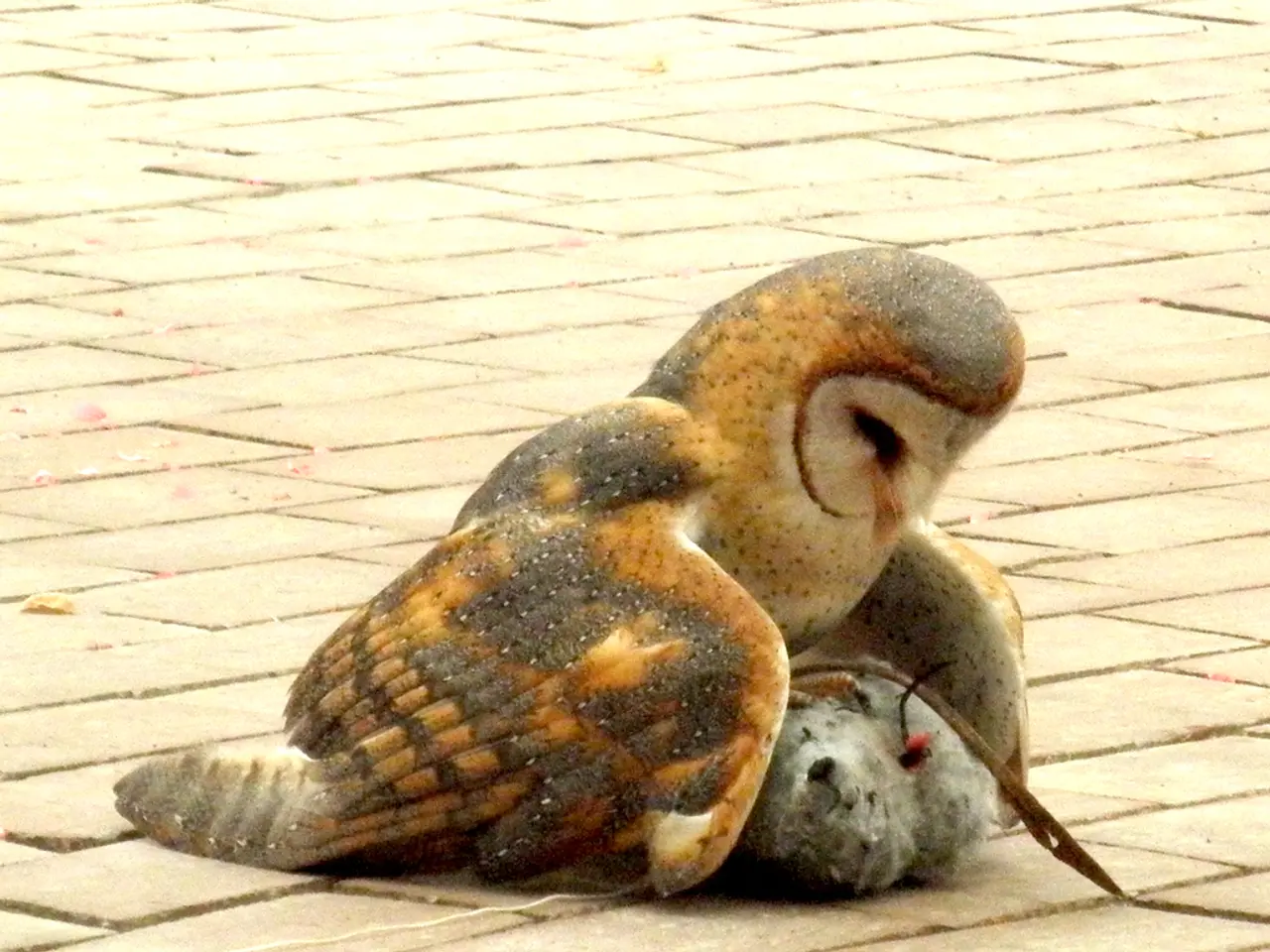Exploring the Hidden Strengths and Capabilities of the Mysterious Raven
In the realm of the avian world, the raven stands out as one of the most intelligent species, closely rivaled by other corvids such as crows, magpies, and jays, as well as parrots. This high level of intelligence is evident in their problem-solving skills, advanced social behavior, and adaptability.
Ravens demonstrate remarkable problem-solving abilities, as seen in their ability to plan for the future by caching food and remembering its location for weeks or months. They also show a sophisticated understanding of cause-and-effect relationships and multi-step problem-solving techniques. This cognitive flexibility and problem-solving aptitude are further demonstrated by their ability to innovate and adapt tools to solve specific problems.
Their intelligence is not limited to problem-solving. Ravens possess a sophisticated understanding of object permanence, the ability to understand that an object continues to exist even when it is out of sight. This understanding is a hallmark of higher cognitive function, often associated with human infants and primates.
Ravens are also known for their strong memory for social interactions and food caches. They learn from observing the behavior of others, including learning how to find food, avoid predators, and navigate their environment. This learning ability is a key factor in their complex social structures, which are currently the subject of ongoing research.
Studies have shown that ravens communicate with each other using a variety of vocalizations, body language, and visual displays. This complex communication system is a crucial aspect of their social hierarchies, cooperative relationships, and understanding of social dynamics.
Ravens form stable social groups based on kinship and cooperation. These groups play a significant role in their ecosystems, contributing to nutrient cycling through their foraging and caching behavior. By transporting nutrients from areas of high resource abundance to areas where nutrients may be limited, they help maintain a balanced ecosystem.
However, their impact on their ecosystems is not always positive. Ravens prey on the eggs and young of other birds, and their numbers can have a significant impact on bird populations. They also play a role in carrion management, efficiently processing carrion and preventing the spread of disease.
Despite their sometimes negative impact, ravens are often used as symbols of environmental awareness, representing the importance of protecting biodiversity and preserving natural habitats. They hold diverse and often contradictory cultural significance across different societies, embodying wisdom, prophecy, magic, and also bad luck, death, and misfortune.
In conclusion, the raven is a remarkable bird species, with cognitive abilities that rival those of primates and young children. Their intelligence is a result of both neurological factors and their ecological and social lifestyles, making them exceptional among birds and animals more broadly.
[1] Healy, J. (2012). Ravens: The Smartest Birds in the World. National Geographic. [2] Bugnyar, T., & Emery, N. (2005). Ravens use tools to probe for food. Nature, 435(7042), 863-864. [3] Pepperberg, I. M. (2009). The cognitive abilities of African Grey parrots (Psittacus erithacus): a review. Journal of Comparative Psychology, 123(2), 125-141. [4] Balda, C. A., & Clarke, R. T. (2009). Tool use in corvids. In Encyclopedia of Animal Cognition (pp. 1217-1225). Academic Press.
- Science has long admired the intelligence displayed by the raven, as it rivals that of many other bird species and even parrots.
- In the realm of data and cloud computing, environmental science data can provide insights into climate-change impacts on raven populations.
- By adopting sustainable-living practices at home, we can reduce our carbon footprint, thereby curbing climate change's effects on wildlife like ravens.
- Technology can aid in weather forecasting, helping conservationists prepare for harsh weather conditions that ravens may face.
- In the sphere of education and self-development, learning more about the raven's high intelligence can inspire curiosity and expand our understanding of animal cognition.
- Personal growth can be achieved by learning from ravens about problem-solving and adaptability, two essential skills for success in life.
- Career development in fields such as wildlife conservation and animal behavior research can benefit from studying the unique intelligence exhibited by ravens.
- The raven's sophisticated understanding of cause-and-effect relationships can be a model for teaching scientific concepts in a variety of academic settings.
- The raven's innovation and tool use show relevance to technology and engineering, particularly in the fields of robotics and artificial intelligence.
- In the world of sports, equating the raven's problem-solving ability to team strategies in football (NFL), baseball (MLB), basketball (NBA), hockey (NHL), golf, tennis, and mixed-martial arts might reveal competitive advantages.
- Speaking of sports, the raven's social hierarchies could be likened to those found in racing, American football (NFL), basketball (NBA), NCAA-football, and horse-racing teams.
- By learning about weather forecasting and climate-change impacts on the environment, one can make informed decisions regarding environmental correctness when gardening or in home-and-garden activities.
- Understanding the importance of preserving habitats for wildlife like ravens is crucial to ensuring the longevity of various sports organizations, such as the NFL, NBA, WNBA, MLB, NHL, and the PGA.
- Sports-betting enthusiasts might gain insights from the raven's problem-solving skills when making strategy-based decisions.
- As for recreation, watching wildlife documentaries on raven behavior can serve as a source of relaxation and entertainment, complementing hobbies like birdwatching.
- The raven's versatile role in ecosystems, from carrion management to nutrient cycling, aligns with the broader goal of environmental science in maintaining balanced and healthy systems.
- Today's technologically-driven society serves as a reminder of the importance of diverse animals like the raven in the face of rising climate change and habitat loss.
- In the grand scheme of evolution, the raven's high level of intelligence showcases the power of adaptation in an ever-changing environment, underscoring the enduring mystery and beauty of the natural world.




